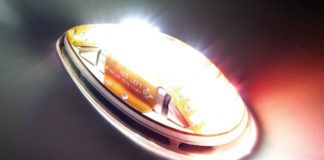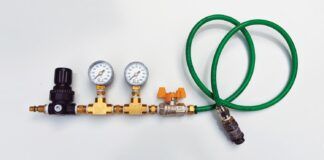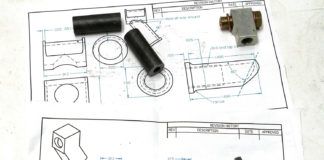Shop Safety Uncommon wisdom about working with power and hand tools.
O.K, Fritz, where are your safety glasses? Don’t have them? You’re outta here. I took all the shop classes in high school and heard that more often than I can count.
Its been said that youth looks at a challenge and imagines what it would be like to succeed. I can make that off ramp at 60 mph this time! Wisdom looks at the same challenge and imagines what it would be like to fail. Lets see, its got a curb, no way of going straight if Im wrong, no emergency crew, 20-foot drop off …Ill slow down.
With age, one hopes, comes wisdom, and applying it to shop safety, now that Im approaching 60, comes a bit easier. For example, when I think about safety glasses, Ive switched from What a nuisance, I cant see with em to What a nuisance, but there’s a lot of small junk flying around here. Quite truthfully, Im amazed I made it through that early period in one piece. But I did, and so did you. So lets talk about safety in the shop. Maybe you’ll think to yourself, Son of a gun, I hadn’t thought of that.
The Basics
Safety glasses. Hey, thats a no-brainer, right? Not quite. The operative word here is safety, as in tempered. Those $200 bifocals don’t qualify because they’re not likely to be tempered glass. Without that treatment, those glasses could be shattered into splinters by an object that might have only bruised you. Shift that wisdom thinking into gear for a moment by imagining glass being shattered half an inch from your open eye.
You don’t have to look like a Buddy Holly wannabe, either. (If you’re under 40, Google it to see what I mean.) The photo shows some nice safety glasses. They’re wraparound, so you get the side protection without having add-on side shields. However you do it, just do it.
Heres another good reason for safety glasses: That old chisel you inherited from your grandfather has one end that looks like a used .357 hollow point bullet; its mushroomed back far enough to roll onto itself. It may look macho, but those edges can split off and go flying faster than a P-51 at the Reno Air Races. I cant show you a picture of this because all of my pounding-on tools have the mushrooms ground off .
How about gloves? Good for hand protection, right? Yes and no. If you’re using a file or working with sharp sheet metal, they’re a good idea. But think it through for a moment; you wear gloves because they’re tougher than skin. Gloves wrap completely around your hand, so if the glove is grabbed by spinning machinery, say, a lathe, instead of losing a bit of skin or even a finger, your entire hand will be pulled in. Gloves are tools, and its important to know when to use them.
Rings are a no-no, too. If gloves can drag you into the machinery, a ring or loose jewelry can put you in the market for a pocket watch in no time. On the other hand (pun intended), if you want to keep your hands clean while working with a lathe or mill, use one of the liquid glove style lotions that make washing up easy.
Speaking of staying clean enough that your spouse will let you in the house, get a shop coat. Not only will it save your clothes, it might keep your shirttail out of the machinery as well. It should be just a bit snug, or that function is negated.
Hand tools used in an unsafe fashion might not remove a major chunk of you, but they can hurt. Why this is true is beyond me, but files are frequently sold without a handle. That pointed tang is not a good item to be pushing on when using the tool. It can poke a hole in you faster than a used-car salesman can spot a new guy on the lot. Buy some handles and epoxy them onto your files.
Similarly, I was always told to avoid banging hammers against one another; they can crack off little bits of steel in a dandy imitation of a hand grenade. This might be an urban myth, but Im not willing to test it, especially without safety glasses.
Another urban myth was confirmed by test recently, proving that welding sparks can, indeed, burn through your pants and through plastic, igniting the fuel in the propane lighter you may have in your pocket. Leave them in the house-lighters, not your pants.
One of the advantages of age is that, unlike when I lived in San Francisco in the late sixties, I now use a washcloth to comb my hair. But if your hair touches your shoulder, stuff it under a hat, use a hair net, or go to the barber before you work with a lathe or mill. A spinning lathe can scalp you faster than Sitting Bull at the Little Big Horn.
A Little Lift
Steel-toed shoes are useful when you drop something heavy on your toe. In that safety sandals are not yet on the market, need I mention anything about sandals other than No way, Jose?
What works better is to pick up only what you’re willing to drop on your foot. Anything heavier than that should be lifted with a hoist or a hand truck. Thats nigh on impossible, of course; there is always something like a sledgehammer. I hear you wondering, What kind of plane is he building? You get the idea.
That brings us around to the fact that there’s more to safety than hardware; there’s good sense and biomechanics. Its been said that the human skeleton is a marvelous invention. Well, from an engineers standpoint, its a wretched mess. Consider the basic construction: Your heart, lungs, ribs, arms…all of it, is supported not in the center, but to the extreme back edge, by your spine. That means that the spine is heavily loaded before you even bend over. Now add too many six-packs while building so you’ve a bit of gut. Next, add the 40 poundsthat you got from the bench. And, finally, consider the total load of picking up 40 pounds off the floor. Is it any wonder that chiropractors do a booming business?
Chips Ahoy
Lets consider one of the three biggies in my shop: the lathe. Im merrily making chips that get longer and look rather interesting as they come off the material. But what happens if that 4-footlong chip suddenly wraps around the spinning chuck? It becomes a flail with sharp edges that could either give you a nasty cut or pull you right into the spinning headstock.
There’s a temptation to pull this continuous chip like an unraveling sweater. However, a moments inattention could allow the chip to catch on the headstock, and now you’re holding that flail…not pretty. The solution is to stand off to the side, away from the headstock, or use a type of cutting tool that has a chip-breaker style edge (well review those in the Home Machinist series). All this talk of injury brings up having a decent first-aid kit. Its useless until you need it.
I have my shop coat and glasses on, no gloves, and the file has a handle, so Im good to go, right? Heres where the one-seventh of the population that is left handed has an advantage. The rest of us use a file with the handle in our right hand and our left hand on the other end. But doing that will drape your left sleeve over the spinning lathe chuck. Try this left handed, and you’ll see that while it seems a bit clumsy, its a lot safer.
Some machinists have a hook made of a quarter-foot rod, which they use to grab the chips as they are coming off the material. Good idea? Im not too sure about this. If the hook was to be grabbed, it could become part of the flail. Is it likely? No. Its certainly better than using your hand. If you have experience in this area, Id like to hear it.
A lot of shop safety placards prohibit the use of compressed air, while others limit the pressure to 30 psi. This admonition is based on having other people in the shop who may get blasted with a shower of chips along with you. Although working alone reduces part of that equation, you are still there. You can reduce the blowback from cleaning out a drilled hole by placing your gloved hand around the nozzle and the hole. Another way of containing the chips is to hang a plastic curtain on the backside of the lathe. Although it keeps the chips in the vicinity, making cleanup a bit easier, the chips will bounce back so wear those safety glasses.
Air-powered tools usually don’t have much starting torque; they work by getting up momentum. That means that a cutoff tool can cut off a finger quite easily and gloves are of no help. It also means that if it jams in the cut, its going to jump. So that it doesn’t jump at you, they usually spin in a direction that moves the tool away from a right-handed user. But that means that it has a tendency to throw its debris at you. The answer here is to wear a face shield and a shop coat.
Be especially careful with a pneumatic cutoff tool. Its been known to happen that when concentrating on the work, the operator moved his left hand to grip the guard and missed, thereby grabbing the spinning cutting disk. It will, I assure you, remove a hunk of you faster than a politician chasing a campaign donation.
Although it is tempting to refer to all of this as common sense, the only thing that is common about it is that it is often rare. So it would seem that the best practice in the shop would be to look at your current situation and display that hard-won wisdom by asking yourself, I can try this, but what happens if it goes wrong?
Finally, if all this scares you completely out of the shop, consider that Ive been out there for 45 years and, with a few safe practices, I still have all my fingers and toes.













